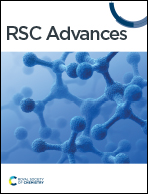Investigation into the impact of CeO2 morphology regulation on the oxidation process of dichloromethane
Abstract
Four distinct CeO2 catalysts featuring varied morphologies (nanorods, nanocubes, nanoparticles, and nano spindle-shaped) were synthesized through a hydrothermal process and subsequently employed in the oxidation of dichloromethane (DCM). The findings revealed that the nano spindle-shaped CeO2 exhibited exposure of crystal faces (111), demonstrating superior catalytic oxidation performance for DCM with a T90 of 337 °C and notably excellent low-temperature catalytic activity (T50 = 192 °C). The primary reaction products were identified as HCl and CO2. Through obvious characterizations, it showed that the excellent catalytic activity presented by CeO2-s catalyst might be related to the higher oxygen vacancy concentration, surface active oxygen content, and superior redox performance caused by specific exposed crystal planes. Meanwhile, CeO2-s catalyst owned outstanding stability, reusability, and water inactivation regeneration, which had tremendous potential in practical treatment.



 Please wait while we load your content...
Please wait while we load your content...